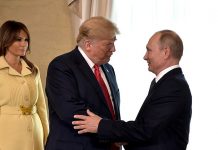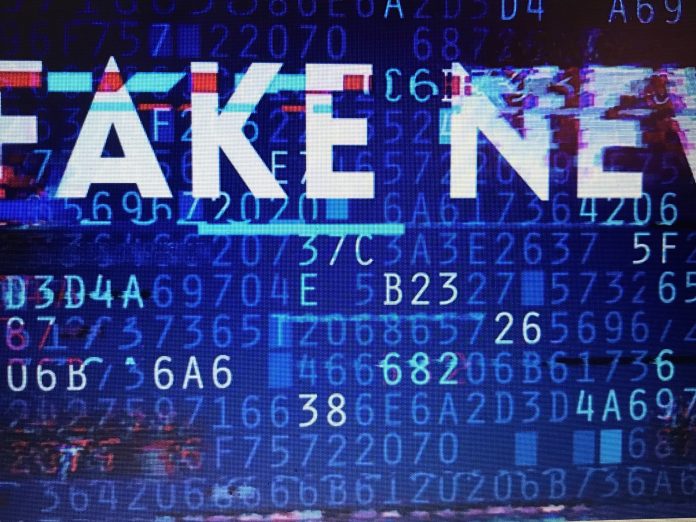Conspiracy theories, fake news, disinformation, misinformation, propaganda. These flourish in times of crisis, like now.
Disinformation
Disinformation is nothing new. It’s been around ever since the 18th century, and the Soviets and Russians have been perfecting it ever since the Bolshevik Revolution of 1917.
Sensationalism a ‘soft’ cousin of misinformation has always sold well. By the early 19th century, modern newspapers came on the scene, touting scoops and exposés, but also fake stories to increase circulation.
The New York Sun’s “Great Moon Hoax” of 1835 claimed that there was an alien civilization on the moon, and established the Sun as a leading, profitable newspaper.”
Nazi propoganda
It was used by Nazi propaganda machines to build anti-Semitic fervor. It played a role in catalyzing the Enlightenment, when the Catholic Church’s false explanation of the 1755 Lisbon Earthquake prompted Voltaire to speak out against religious dominance.
In the 1800s in the U.S., racist sentiment led to the publication of false stories about African Americans’ supposed deficiencies and crimes.
A story that entered Romanian folklore, for those old enough to remember, was Evenimentul Zilei’s story about a hen that gave birth to chickens. It was dreamed up by Ion Cristoiu in the early 1990s, who is well versed in spin and propaganda.
Sinister side
But while many chuckle at moon and chicken stories, it has a more sinister side.
It aims to divide, spread confusion, create doubts and uncertainty and overturn the state order. It kills. How many people died because they didn’t believe Covid existed and thought the vaccine contained 5G, gene-altering substance and so on?
What role do journalists play? First of all we have to get a handle on it in order to guard against it.
A lot of recent disinformation is connected to the pandemic and Russia’s war in Ukraine. People who are anti-vaccine, Covid deniers are often those that spread misinformation and disinformation about the war that originates from the Kremlin and their now infamous factory in St Petersburg that spread lies and confusion around the world—with some success.
Fake news
Fake news and its close cousin ‘conspiracy’ come from a position of mistrust of state authorities that you find in other former communist countries like Bulgaria and Hungary. The public doesn’t trust their governments. They have had good reason not to do so. They have been lied to for decades and the trauma and mistrust linger even 32 years after communism ended.
Many feel disenfranchised if not from actually voting, from the decision-making process. They don’t trust the elite. They don’t even trust the mainstream media. See the rise of populist, anti-establishment leaders such as Viktor Orban and Donald Trump and in Romania, AUR.
Being a victim of malign forces has a certain comfort.
It’s not just connected to their own countries though. In Romania (and not only) people thought Princess Diana death was foul play and that she’d been assassinated as she was dating a Muslim.
Conspiracy theories and fake news are more exciting, more sexy than the official version you get from the government and official institutions such as the IMF, the UN or the WHO.
Shit detector
The media, the Romania media isn’t immune to fake news. Journalists should have a better ‘shit detector’ be more adept at critical thinking, and have a better nose for detecting misinformation. But they aren’t always.
Even worse, some are actually on the other side and spreading disinformation. Wolves dressed in sheep’s clothing, often posing as commentators rather than paid propagandists with an agenda as they are.
I’d go a step farther and say I believe that some may even be involved in creating disinformation, but that is a hunch, a reasonable assumption, not a fact.
Fact checking
Fact-checking is an essential part of our job. Many journalists I know actually stay awake at night, fearing they got something wrong. I’m much more concerned about making a mistake than making a typo–- though readers love picking that up too.
Journalists of good faith are fighting a battle every day. It’s idealistic statement of course but a good place to start: we are warriors not just for truth but for fairness– we write the first draft of history.
I don’t like the word impartiality or objectivity they seem like subjective, unrealistic concepts to me… but fairness is attainable as it implies ‘good faith’ and it’s a reasonable place to start.
Russia
So where does this disinformation come from? I’m afraid this isn’t breaking news, but it’s Russia, which is actually extremely good at it. Disinformation is a weapon of stealth, it’s a weapon of war.
Russian state-funded and state-directed media outlets RT and Sputnik are critical elements in Russia’s disinformation and propaganda ecosystem.
The European Commission President Ursula von der Leyen banned the EU the outlets which “spread lies” to justify the invasion of Ukraine.
That was one step, but it also fed into the ‘victim complex’ and those journalists have social media presence and have found other outlets to ‘preach’ their propaganda.
How does it work?
Propoganda ecosystem
In an August 2020 report, the Global Engagement Center outlined the five pillars of Russia’s disinformation and propaganda ecosystem.
It found that RT and Sputnik are key state-funded and directed global messengers within this ecosystem, using the guise of conventional international media outlets to provide disinformation and propaganda support for the Kremlin’s foreign policy objectives.
RT and Sputnik also interact with other pillars of the ecosystem by amplifying content from Kremlin and Kremlin-aligned proxy sites (some of which are connected to Russian intelligence), weaponizing social media, and promoting cyber-enabled disinformation.
RT and Sputnik’s role as disinformation and propaganda outlets is most obvious when they report on issues of political importance to the Kremlin.
Ukraine
A prevalent example is Russia’s use of RT and Sputnik to attempt to change public opinions about Ukraine in Europe, the United States, and as far away as Latin America.
When factual reporting on major foreign policy priorities is not favorable, Russia uses state-funded international media outlets to inject pro-Kremlin disinformation and propaganda into the information environment.
The information environment includes the media, social media, blogs and content shared on WhatsApp.
False narratives
Social media giants and mainstream media have taken steps, implemented programs to debunk false narratives, but it is never enough. As soon as you expose those lies, new ones appear, like Japanese knotwood.
Journalists play an essential role in defending their readers from toxic mistruths.
First of all they have to be aware of it, which any professional media person is. Universul.net has chosen to educate our readers on misinformation.
We have pointed out topics and also propagandists who come from the church, politics, academic world and the media.
Misinformation is everywhere online, and anyone can be vulnerable to it. On social media, you may have at one point shared an article that you believed to be true at the time, but that you later discovered actually contained falsehoods or outdated information.
Misinformation
While both misinformation and disinformation can deceive audiences, the distinction is that disinformation is intentionally, maliciously deceptive. Both forms often involve widespread dissemination, whether or not the person sharing is aware of the inaccuracies.
It’s important for everyone to know how to spot mis- and disinformation online to avoid spreading falsehoods and to be critical consumers of online news, particularly through social media.
Misinformation has become so prevalent online that some organizations have launched initiatives to tackle it, such as the Google News Initiative, and Poynter’s MediaWise Teen Fact-Checking Network.
Parallel state
Before the war my colleague Laurentiu Mihu made this list.
- Soros and the ‘parallel state’ cultural values (LGBT), immigration
- Romania is a ‘second-rate state’, humiliated, double standards in the EU. Former Social Democratic leader Liviu Dragnea suggested food imported from the West was or inferior quality.
- High costs of NATO and security; the risks of having a military presence in Romania. „Anti-EU discourse, multinationals, Schengen, taxes paid by foreign corporations.
Who spreads the message?
- Diana Șoșoacă, Mihai Lasca, Dumitru Coarnă, Francisc Tobă – politcians, pro-Putin, anti-West.
- Olivia Steer, Oana Lovin, Georgiana Arsene – tnti-vaccinism, Sputnik, ‘putinism.’
- Dan Puric – actor known for his ultra-conservative views.
- Călin Georgescu, George Simion – populism, putinism.
- Adrian Severin, Adrian Năstase – putinism, anti-West.
- IPS Teodosie – radical cleric who adopts a separate line to the Orthodox Church known for pro-Putin views.
Good guy
The narrative of #disinformation builds the case for why Russia’s Putin is the good guy, Russia is the victim, and #Ukraine is the aggressor. Now is the moment to appeal to Romanians with some historical grievances, real and imagined.
Now for some historical spin. Ukraine is not a friend even if old border disputes have been settled peacefully, if not happily. Ukrainian refugees are rich and ungrateful. They wouldn’t help Romanians if the shoe was on the other foot.
The story next doubles down on more falsehoods. It claims Ukraine is not a country officially recognized by the United Nations and Ukraine was created by Lenin in 1917 to steal territories from Poles, Slovaks, Hungarians, and Romanians.
The story omits to say that in the 1600s, Romania was three distinct principalities, like many other European countries.
Now the story reverts to an anti-Western position. If the Ukrainian “ghost state” does not recognize minorities (such as Romania’s own minority) then NATO the European Union should stop recognizing Kosovo, the “cradle of Serbian orthodoxy” taken by force from then Yugoslavia.
The story goes on to say that NATO bombed Belgrade to stop massacre in Kosovo, and if anyone complains about the Russian invasion of Ukraine, it is sheer hypocrisy.
The final blame lies with the United States which dropped the Atom bomb, has been “at war for 180 years,” and has destroyed a number of countries „in the name of democracy.” Another one thrown in for good measure: ‘democracy =bad.’
The narrative ends with a conspiracy that journalists who deviate from this narrative are journalists with a poitical agenda, aren’t they?
A version of this text was delivered on May 27 at the International Conference in Turda Romanian-Icelandic Perspectives, at the Ratiu Democracy Centre.
A guide to Russian disinformation in Romania during the Ukraine conflict


















